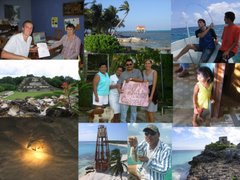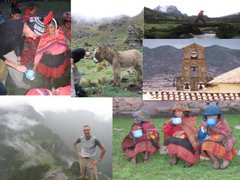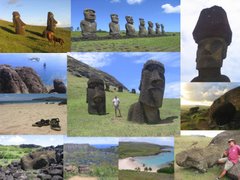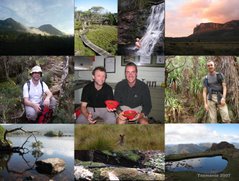Tricky photography by the fireside - note the unexplained goulish skull above the fire!!! (sorry Caroline)
Up until Chile, South America had failed to meet my expectations in one important respect. After such a bad dose of the runs in Roatan (aka the Hondurance Endurance), I expected at least a few ´bouts´down here in S America.
But things had been fine and my immodium supplies remained undiminished until I got on the truck for the two hour journey from San Pedro to Calama.
I have an interest in religion without feeling committed to any traditional concept of a supreme deity (bear with me, i know this seems like an obscure change of tact). Also, I do consider myself to have strong moral values, but without having derived those from divine inspiration (getting back toward the point now, honestly). But I can tell you that there´s no such thing as an atheist with the runs travelling on a truck in the middle of a flat featureless desert.

And I can resolve many an ecumenical argument by confirming that my prayers were answered  when I arrived at Calama without calamity, with seconds left to sprint to the supermarket loos.
when I arrived at Calama without calamity, with seconds left to sprint to the supermarket loos.
 when I arrived at Calama without calamity, with seconds left to sprint to the supermarket loos.
when I arrived at Calama without calamity, with seconds left to sprint to the supermarket loos. As well as divine intervention, I think music was a great help - in particular, a few listens of KWS - "Please Don´t Go", and at my moment of greatest need, i took great comfort from Wilson Phillips "Hold On For One More Day". (Graeme - over to you...)

Luckily i was able to put a cork in things for the next stage of the trip - bush-camping.
One of the biggest problems camping in the desert is getting wood. Being a responsible guide, Dan organised a scavanging hunt at the side of the road on our way to our desert camp.
24 burgers between 7 people, erm including 2 vegetarians. Who sent Caroline and Calum shopping?
Luckily, Ali got so much wood that we had to help him carry it back to the truck. At the same time, one other possible danger is getting too much wood, which can keep you up all night if you´ré not careful. A bucket of water is a handy cure to have to hand.
 Our last stop before Santiago was the seaside port of Valparaiso.
Our last stop before Santiago was the seaside port of Valparaiso.Santiago itself was a real revelation for me. I hadn't been expecting much but personally i found the place to be really lively and cosmopolitan. So my last 48 hours in mainland Chile were a real adventure. Jazz clubs until 2am, clubbing until 4am, staying up until 10am and beyond... and a special hi to my Chilean friend from Santiago Camila. Next stop Easter Island.














 From the edge of the salt-flat a drive into the centre becomes an increasingly eerie and unnerving adventure. The chalk white surface at the edge of the salt flat appears to change colour as you head towards the centre, taking on a pale blue colour, until you realise that this blue is the reflected blue of the sky.
From the edge of the salt-flat a drive into the centre becomes an increasingly eerie and unnerving adventure. The chalk white surface at the edge of the salt flat appears to change colour as you head towards the centre, taking on a pale blue colour, until you realise that this blue is the reflected blue of the sky.














